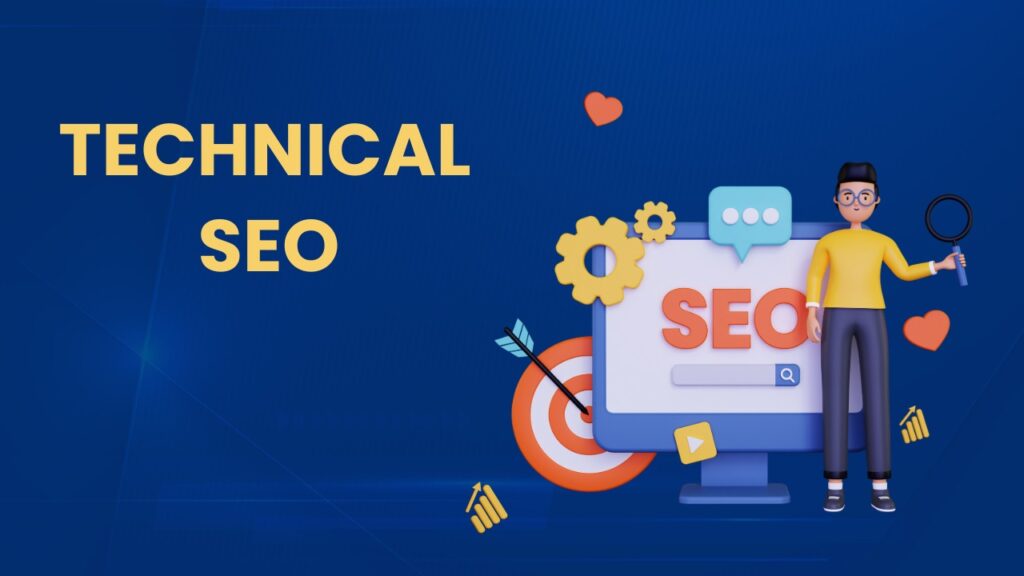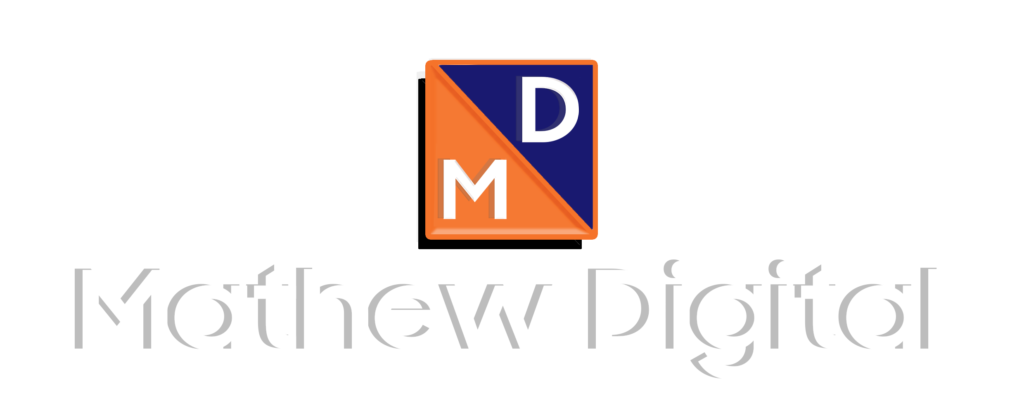Contents
What is Technical SEO?
Technical SEO is the process of improving a website’s technical aspect to increase its search engine ranking. It focuses on things like making the site easy for search engines to crawl, speeding up page load times, also making sure it works well on mobile devices.
Why Technical SEO is Important?
Technical SEO is important because it ensures that search engines can easily find, crawl, and index your website. Here are some key reasons why it’s crucial:
1. Better Search Engine Ranking: Optimizing technical aspects helps improve your website’s visibility in search engine results, leading to higher rankings.
2. Improved User Experience: A technically optimized site loads faster, is more secure, and works well on mobile devices, which enhances the overall user experience.
3. Increased Crawlability and Indexability: By making your site easier for search engines to crawl and index, you ensure that all your important pages are accessible and appear in search results.
4. Higher Traffic and Engagement: Better rankings and user experience lead to more visitors, longer time spent on the site, and lower bounce rates.
5. Secure Website: Implementing HTTPS and other security measures builds trust with users and search engines, further boosting your rankings.
6. Prevention of Technical Issues: Addressing technical SEO issues prevents problems like broken links, duplicate content, and slow load times, which can negatively affect your site’s performance and ranking.

Crawlability
Robots.txt File in Technical SEO:
The robots.txt file is super important for Technical SEO. It tells search engines which parts of your website they can explore and which ones they should stay away from. By setting it upright, you can make sure search engines focus on the important stuff and ignore the rest. It’s like giving them a map to navigate your site. So, paying attention to your robots.txt file is key to making your website perform better in search results.
Technical SEO:
XML sitemaps are like maps for search engines, showing them around your website and listing its important pages. They help search engines understand your site better and index its pages faster. Including an XML sitemap in your technical SEO strategy is important for making sure search engines can explore your website easily.
Site Speed
Optimizing Images and Videos: Optimizing images and videos is about making them look and work their best on your website. This involves resizing images, compressing them to load faster, and adding descriptions. For videos, it means choosing the right format and size and adding titles. Doing this helps your site load faster, improves user experience, and makes it easier for people to find your site on search engines. It’s like giving your visuals a makeover to shine on your website!
Minifying files: Minifying files in technical SEO is like shrinking down the size of your website’s files, such as HTML, CSS, and JavaScript, by removing unnecessary spaces, comments, and characters. This process helps to reduce the file sizes, making your website load faster. When files are minified, they are more streamlined and efficient, leading to quicker load times for your website visitors. So, by minifying files, you can improve your website’s performance, and user experience, and even potentially boost your search engine rankings. It’s like tidying up your files to make your website run smoother and faster!
Browser Caching: Think of browser caching as a storage system on your device for website files. When you visit a website, your browser saves certain files like images and scripts. The next time you visit, instead of fetching everything again, your browser quickly retrieves these saved files, speeding up the site’s loading time. It’s like having a fast-access drawer on your computer for websites you’ve already visited.
CDNs (Content Delivery Networks): CDNs act as rapid delivery services for website files. They store copies of a website’s files on servers worldwide. So, when you visit a site, the CDN fetches the files from the nearest server to your location, reducing the loading time. It’s akin to having multiple warehouses stocked with copies of your favorite books, ensuring quick access no matter where you are.

Mobile-Friendliness:
Responsive Design: Responsive design in technical SEO involves creating websites that can adjust and display well on different devices and screen sizes, like desktops, laptops, tablets, and smartphones. It means designing sites to adapt their layout, content, and features based on the device being used. This ensures a consistent and user-friendly experience for visitors, regardless of how they access the site. Ultimately, responsive design aims to improve usability and enhance a website’s performance in search engine rankings.
Mobile Load Times: Mobile load times in technical SEO refer to how quickly a website’s pages load on mobile devices like smartphones and tablets. It’s about how fast a webpage appears on your phone after you tap a link or type in a web address. Fast mobile load times are important because they make it easier for users to navigate and use a website on their phones without waiting too long. To improve mobile load times, you need to make sure your website’s files are not too big, your server responds quickly, and you use techniques like browser caching to deliver pages faster.

URL Structure:
Clean URLs: Clean URLs in technical SEO are straightforward web addresses that are simple, descriptive, and easy to understand. They often contain relevant keywords related to the page’s content and avoid unnecessary characters or parameters. Clean URLs are user-friendly and provide both people and search engines with clear information about what the page is about. For instance, instead of a complex URL like “https://example.com/?p=1234&category=health&article=5678”, a clean URL would look more like “https://example.com/healthy-eating-tips“.
Using keywords in URLs: It means adding important words or phrases that describe what a webpage is about directly into the webpage’s website address. This helps make the URL clearer and more relevant, so both people and search engines can easily understand what the page is about. For instance, in a URL like “https://example.com/seo-tips-for-beginners”, the part “seo-tips-for-beginners” includes keywords that tell visitors and search engines the topic of the page.
Structure Data: Structured data is like labeling your website’s content to help search engines understand it better. It’s a way of organizing information using a standard format that explains what the content means, not just what it says. For example, if you write an article, structured data might tag elements like the author’s name when it was published, and the title. This helps search engines show more informative search results, like special snippets or info boxes, which can make your content easier to find and understand.
Indexation
Indexation is akin to organizing your website’s pages in a search engine’s library. When a search engine finds a page on your site, it determines whether to include it in its index, which acts like a massive database of web pages. Indexed pages are eligible to show up in search results when users look for relevant topics. If a page isn’t indexed, it won’t appear in search results. Thus, indexation is vital for ensuring your pages are discoverable by users searching online.
Benefits of technical SEO
The benefits of technical SEO include:
1.Better Search Engine Rankings: Helps your site appear higher in search results.
2.Faster Loading Times: Makes your website load quicker, improving user experience.
3.Improved Crawlability: Ensures search engines can easily access and understand your site.
4. Mobile Optimization: Makes your site work well on mobile devices.
5. Enhanced Security: Protects your site and user data with HTTPS.
6. Structured Data: Adds extra information to help search engines understand your content better.
7. Reduced Duplicate Content: Prevents issues with duplicate pages.
8. Better User Experience: Creates a smoother, more efficient experience for visitors.
How does technical SEO fall under the category of on-page SEO
Technical SEO falls under the category of on-page SEO because it focuses on optimizing the technical aspects of a website that are within your control, directly affecting how search engines and users interact with your site. Here are the main ways technical SEO is part of on-page SEO:
Site Speed: Improving the loading speed of your website to enhance user experience and search engine rankings.
Mobile-Friendliness: Ensuring your site works well on mobile devices, is crucial as search engines prioritize mobile first indexing.
Crawlability: Making sure search engines can easily access and index your site’s content, which is essential for visibility in search results.
Security (HTTPS): Implementing HTTPS to secure your site, as search engines favor secure sites in their rankings.
URL Structure: Creating clean, organized URLs with relevant keywords to help search engines and users understand your content.
Structured Data: Adding schema markup to provide search engines with additional context about your content, leading to rich search results.
Canonicalization: Using canonical tags to address duplicate content issues, ensuring search engines index the correct version of a page.
By optimizing these technical elements, you improve your site’s performance, usability, and search engine rankings, making technical SEO a vital part of on-page SEO efforts.
Conclusion:
In conclusion, technical SEO is a vital component of your overall digital marketing strategy, ensuring that search engines can effectively find, crawl, and index your website. By focusing on technical aspects such as site speed, mobile optimization, and secure connections, you can significantly enhance your website’s performance and search engine rankings. For businesses seeking to optimize their online presence, investing in professional services is crucial. If you are looking for expert assistance, consider leveraging Digital Marketing Services in Bangalore, where you can find specialized Technical SEO Services in Bangalore provided by a reputable Digital Marketing Agency in Bangalore. These services will help you stay ahead in the competitive digital landscape, driving more traffic and engagement to your site.




